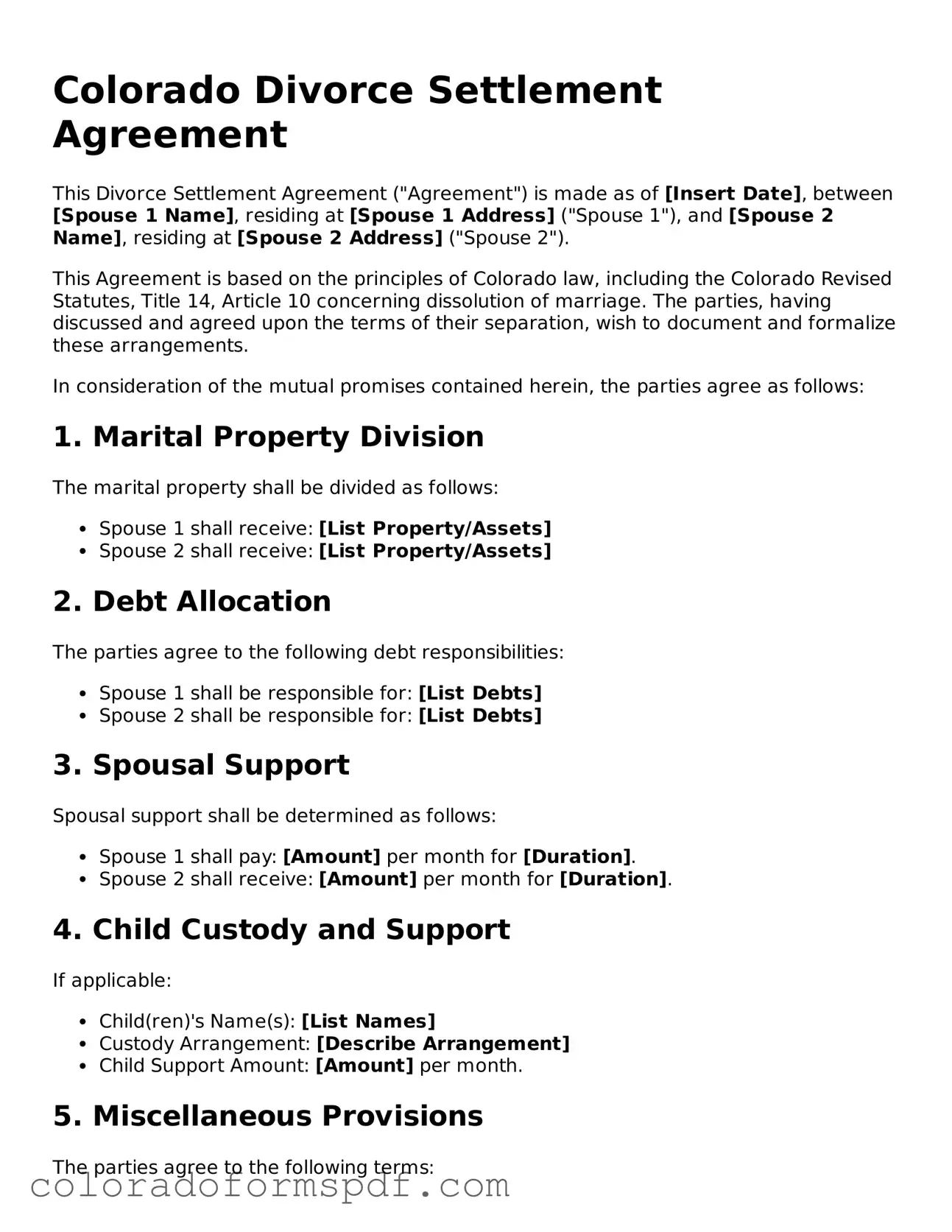Official Divorce Settlement Agreement Template for Colorado State
The Colorado Divorce Settlement Agreement form is a legal document that outlines the terms of a divorce between two parties. This agreement addresses various aspects such as property division, child custody, and spousal support. Completing this form is essential for ensuring that both parties understand their rights and responsibilities following the dissolution of marriage.
Get Document Online
